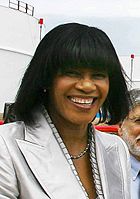User:Luziyca/Sandbox
| File:ImaguaFlag.png | ||||||||||||||||||||||||||||||||||
| ||||||||||||||||||||||||||||||||||
67 seats in the Chamber of Commons 34 seats needed for a majority | ||||||||||||||||||||||||||||||||||
|---|---|---|---|---|---|---|---|---|---|---|---|---|---|---|---|---|---|---|---|---|---|---|---|---|---|---|---|---|---|---|---|---|---|---|
| Turnout | 81.71% ( | |||||||||||||||||||||||||||||||||
| ||||||||||||||||||||||||||||||||||
| ||||||||||||||||||||||||||||||||||
The 2000 Imaguan general election was held on 24 March, 2000, to elect members of the Chamber of Commons to form the twenty-eight Parliament of Imagua and the Assimas.
Background
Despite the efforts of the National Labour Party to form government in the 1996 general elections, and despite the combined votes of the National Labour Party and the Sotirian Democrats outnumbering the Democratic Labour Party, the Democratic Labour Party were able to secure an eleventh consecutive majority government, having continuously formed government in every election since 1960.
In the aftermath of the 1996 general election, the Sotirian Democrats, having failed in their attempt to regain representation in the Chamber of Commons negotiated a merger with the National Labour Party to end "four decades of socialist rule." After several months of discussions, the two parties merged to create the Sotirian Labour Party in March 1997, with the two parties officially merging the following month.
From the start, the Sotirian Labour Party performed better in polls, while the Democratic Labour Party was seen by the Imaguan public as having "run out of ideas" and no longer innovative. In addition, the Baigent Powell scandal in the late 1990s would see the popularity of the Democratic Labour Party decrease substantially.
(TBC)
Campaign
Opinion polls
Results
- ↑ Results were combination of the Sotirian Democrats and the National Labour's results in the 1996 general election.

